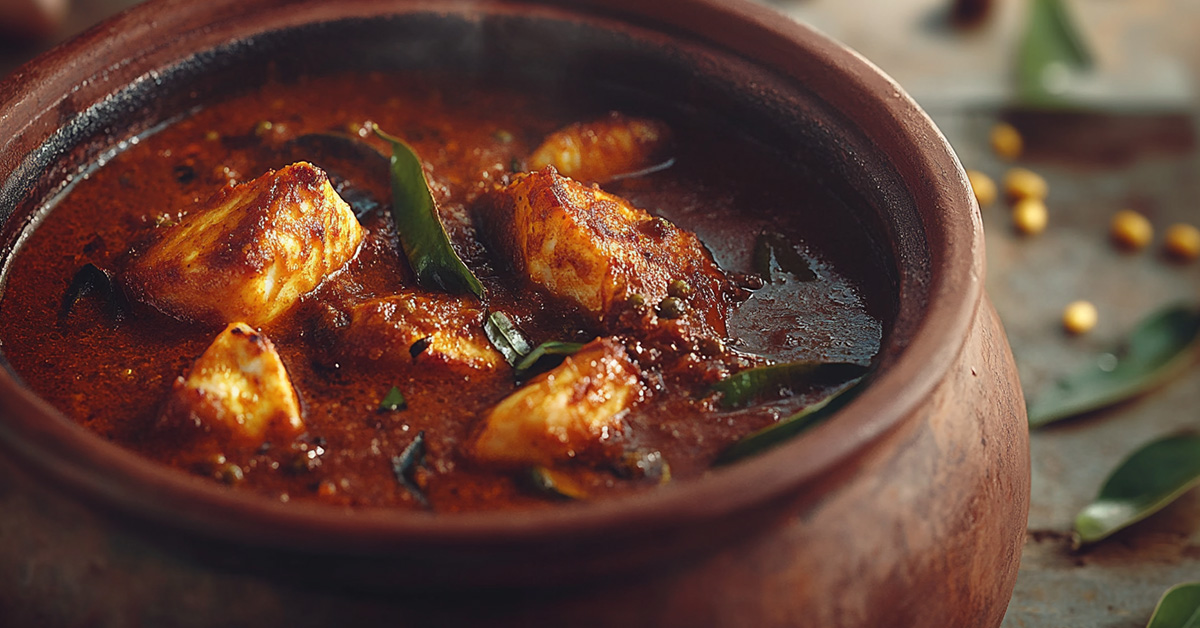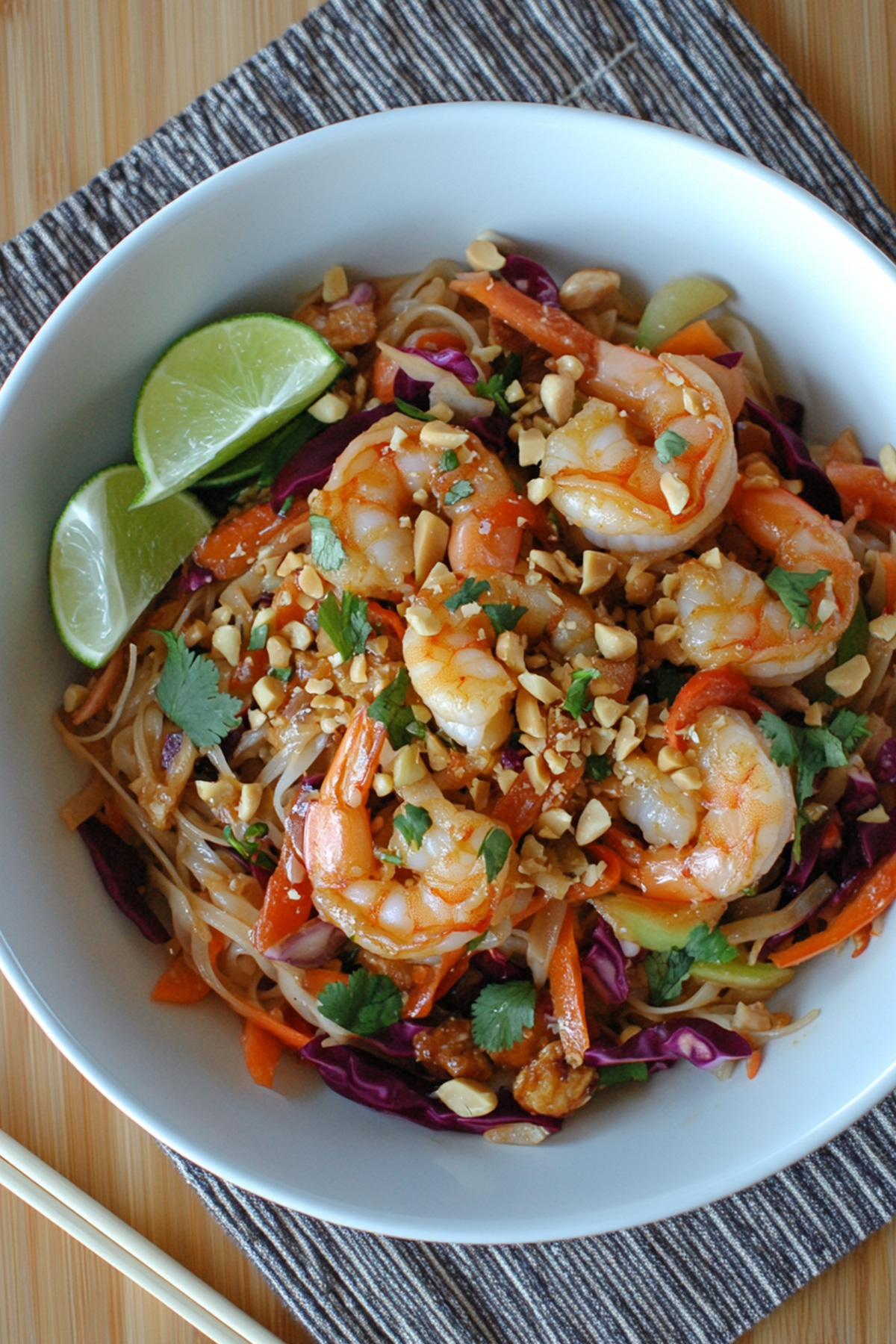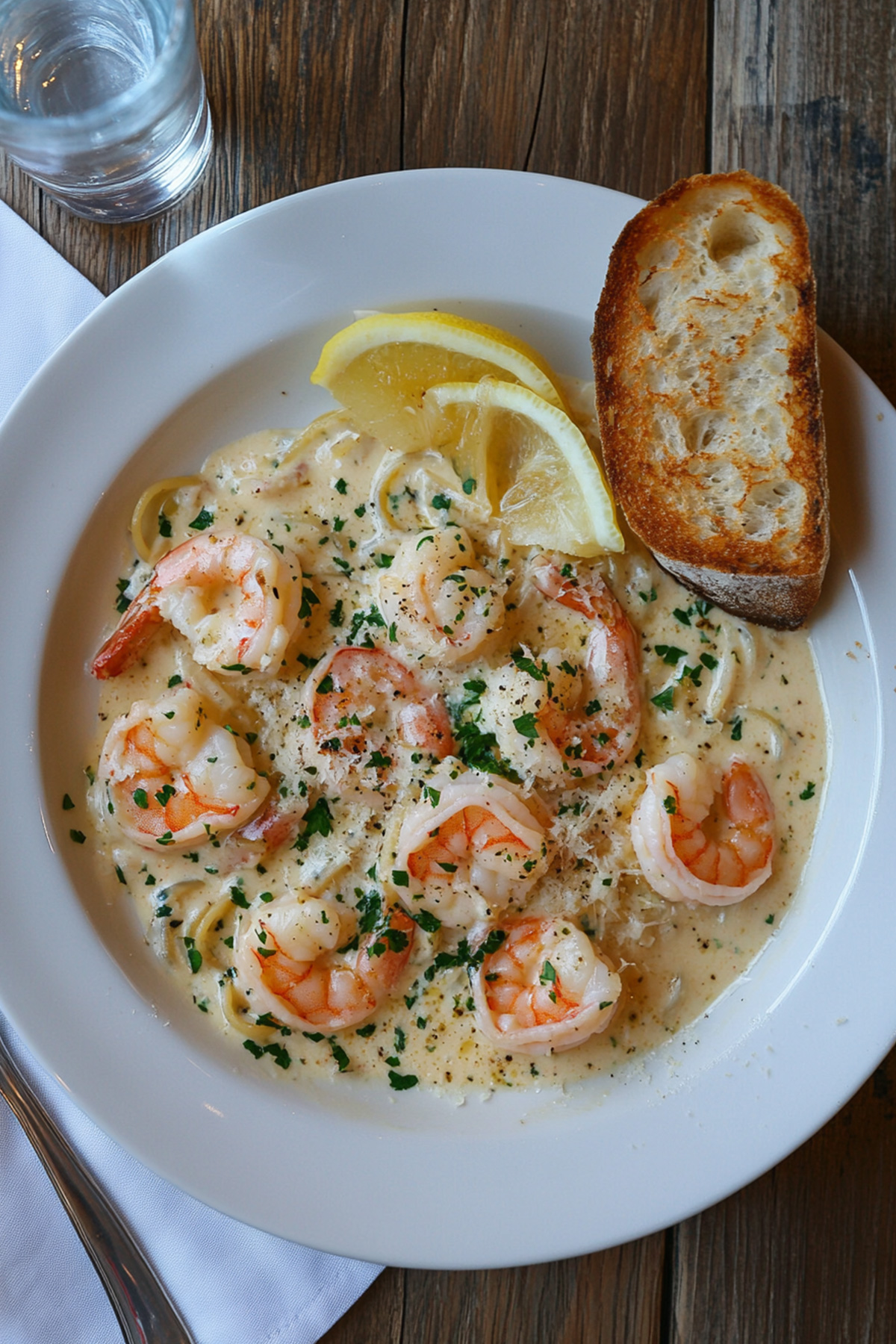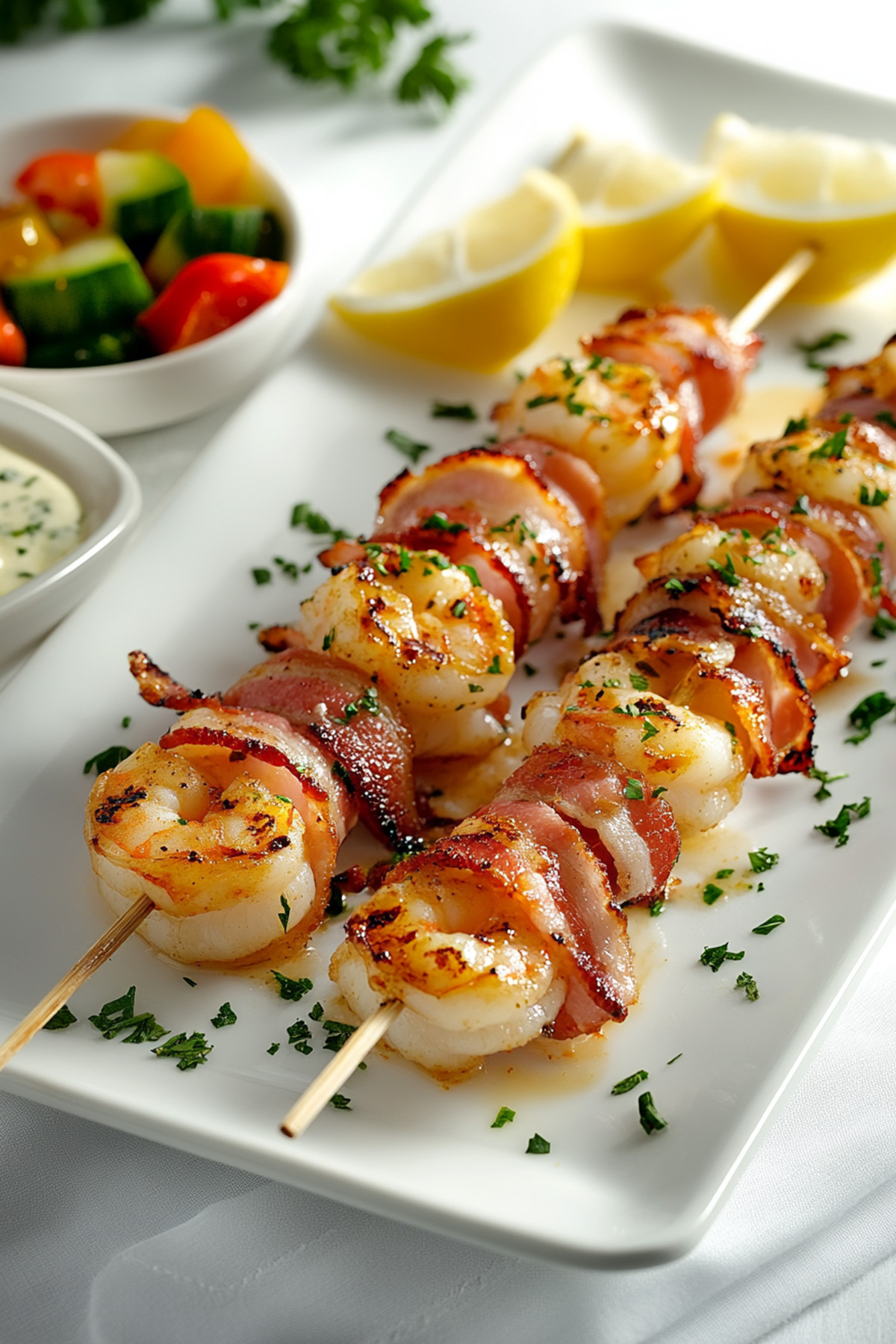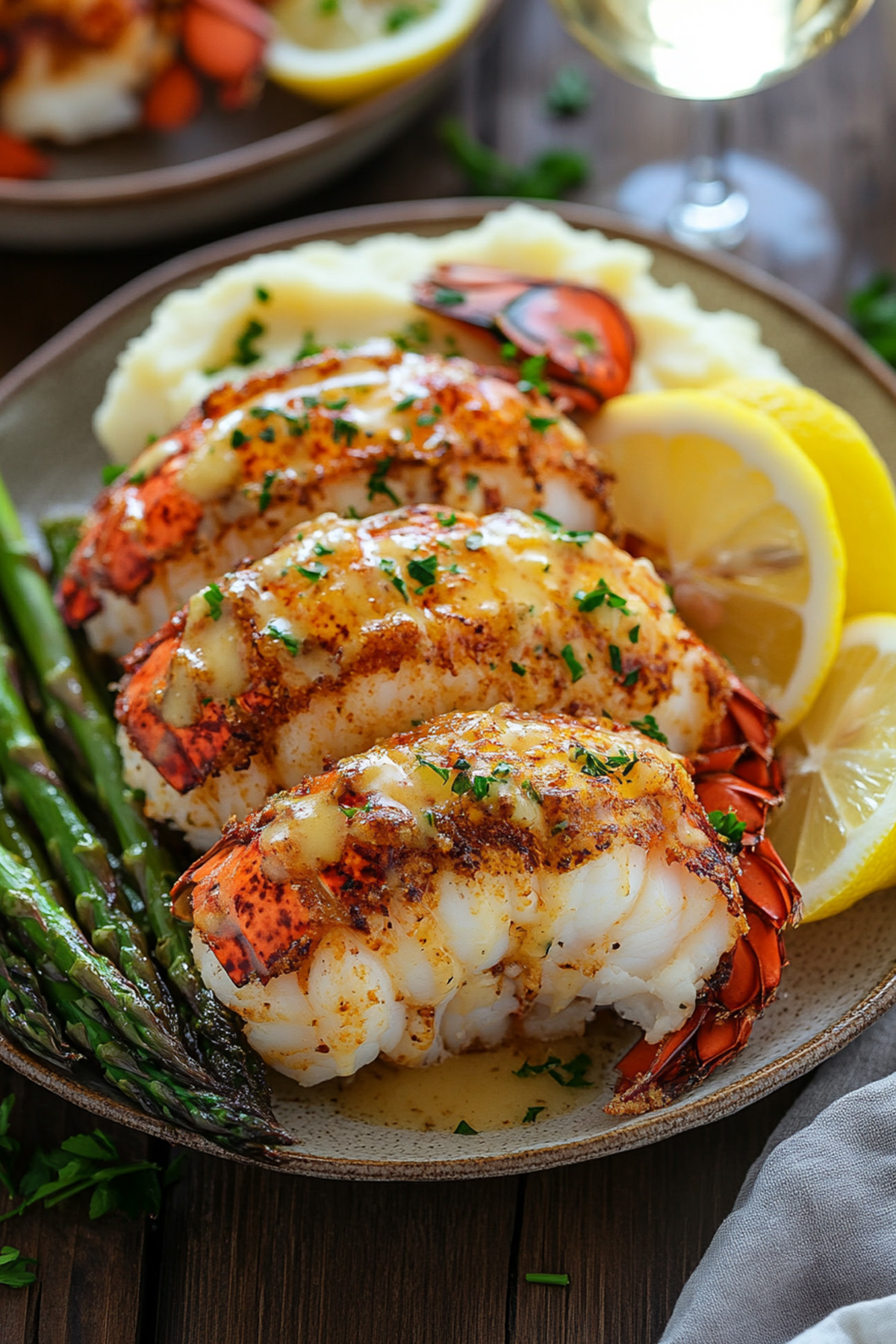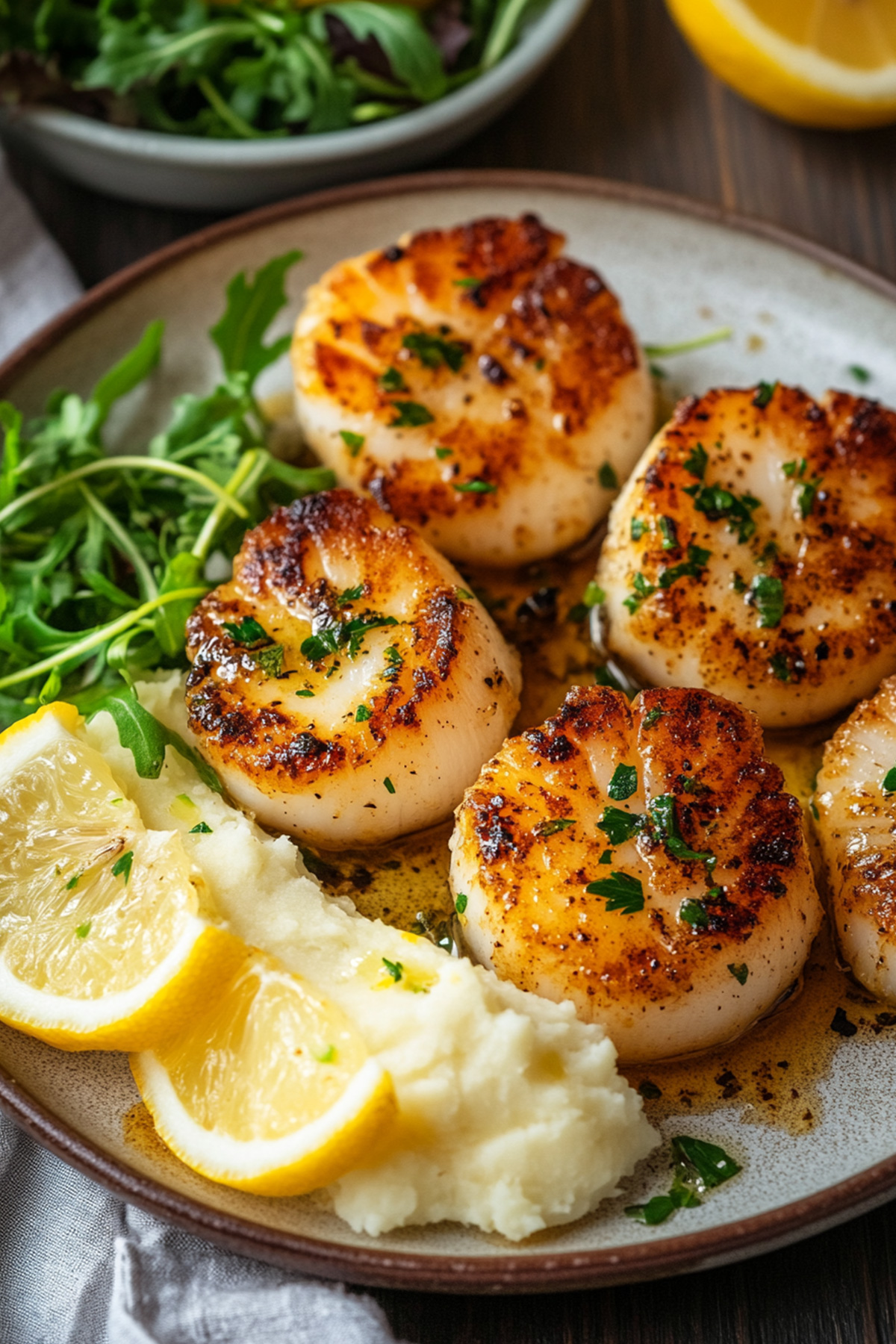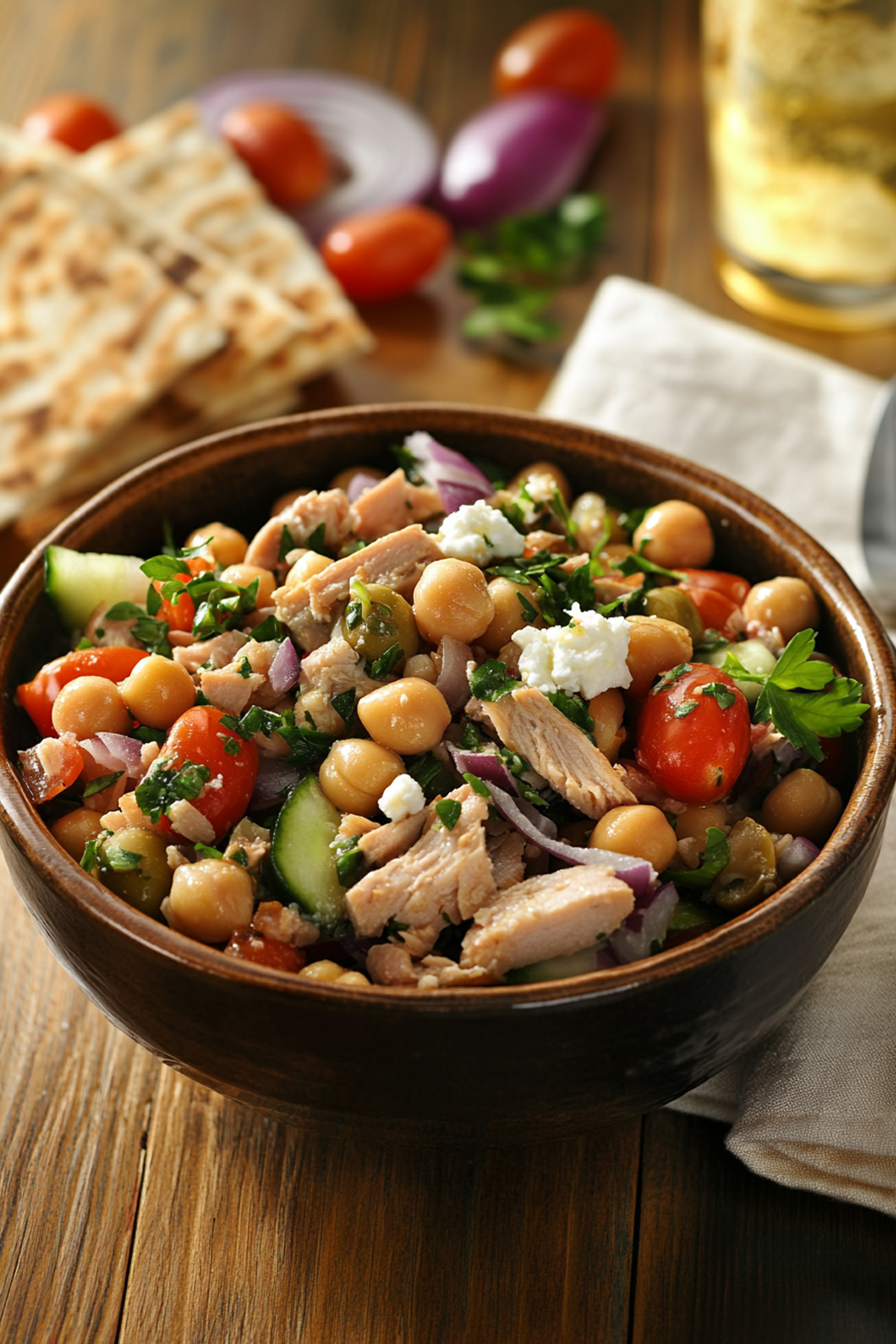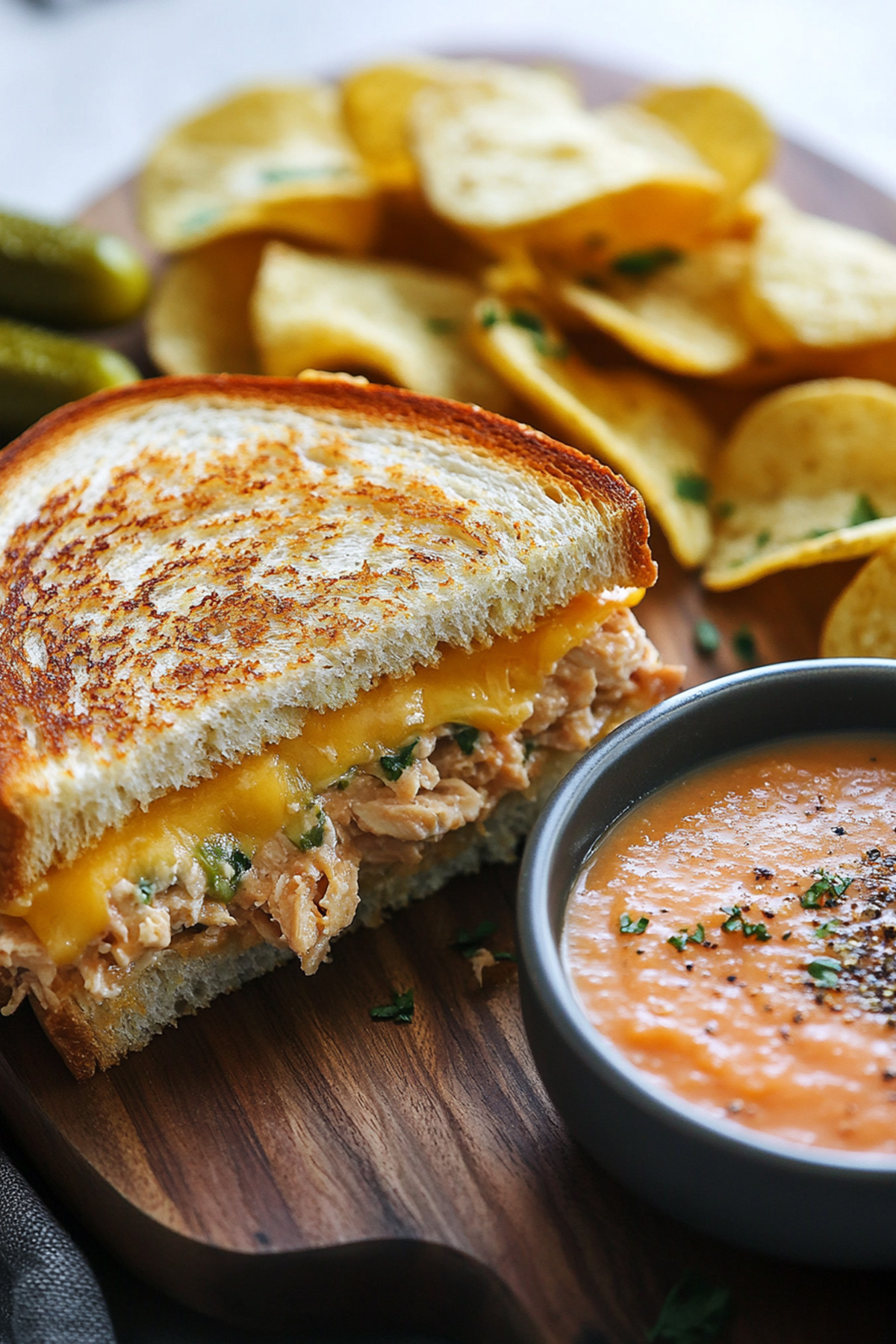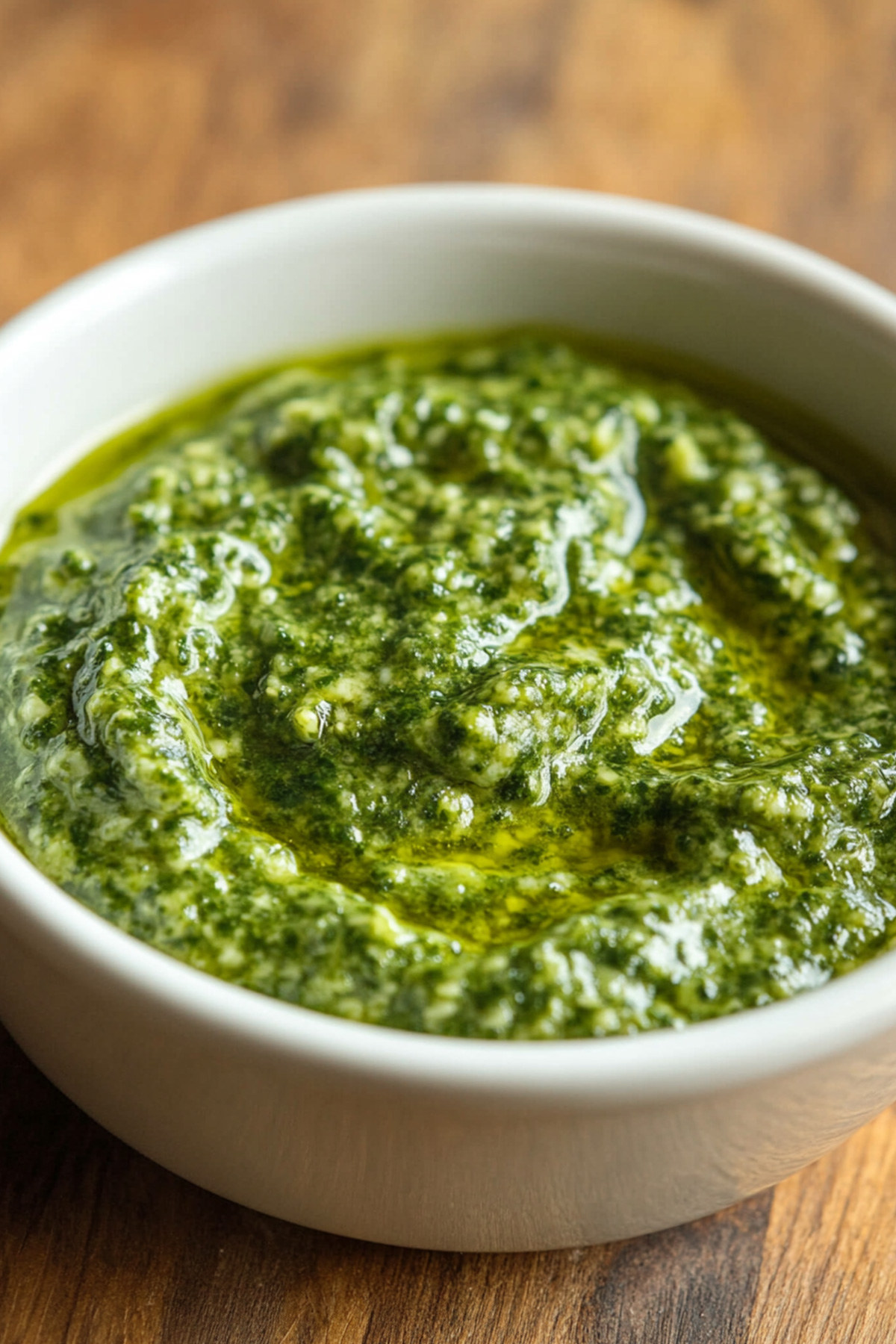Disclosure: As an Amazon Associate and participant in other affiliate programs, we earn from qualifying purchases. We only recommend products we believe will provide value to our readers.
Have you tried to recreate that perfect Kerala-style ayala curry from your favorite South Indian restaurant? This classic fish curry might look daunting initially, but it’s actually one of the easiest dishes to prepare in your kitchen.
The magic of Kerala-style ayala curry lies in its perfect blend of fresh mackerel (ayala fish), aromatic spices, and creamy coconut milk. The result is a dish that brings comfort and bursts with flavor. You can easily make this curry at home regardless of your experience with Indian cooking.
This piece will teach you the secrets of authentic ayala curry preparation. You’ll discover how to pick the freshest fish and balance the spices perfectly. The traditional cooking methods have been adapted to work seamlessly in your modern kitchen setup.
Table of Contents
What is Ayala Fish Curry?
Ayala curry is the life-blood of Kerala cuisine, a flavorful fish curry that brings out the true taste of South Indian coastal cooking. People know it by several names in different parts of Kerala:
- Meen Curry (മീൻ കറി) in Malayalam
- Meen Mulakittathu (മീൻ മുളകിട്ടത്ത്)
- Nadan Meen Curry (നാടൻ മീൻ കറി)
Indian mackerel (Ayala) stars in this dish. The fish’s mild flavor and natural way of soaking up spices makes it perfect for curry. This curry’s versatility makes it special – you can make it with coconut milk, add some tang with kudampuli (fish tamarind), and even throw in fresh mangoes when they’re in season.
Ayala curry shines in its simplicity. The fish is easy to find and won’t break the bank, which makes it great for everyday meals. Kerala’s home cooks often prepare this curry in earthen pots to bring out its deep, rich flavors.
Cooking with ayala is straightforward because you just need minimal prep time. Unlike other fish, mackerel doesn’t need marinating. It soaks up all the spice flavors while cooking and creates a perfect taste balance.
The curry pairs beautifully with steaming rice or traditional kappa (mashed tapioca). Each Kerala region puts its own spin on this classic – some add coconut milk for richness, while others stick to a spicy red gravy base.
Read also: Bengali Fish Curry Recipe
Mastering Kerala Style Ayala Curry
Let’s delve into Kerala’s culinary tradition and find what creates a truly authentic ayala curry. The magic happens when you understand the ingredients and techniques that blend together in perfect harmony.
Your Kerala-style ayala curry starts with aromatics. Shallots are a vital component that add a distinct sweetness and build the curry sauce’s foundation. These shallots work with ginger and garlic to create the aromatic base that defines authentic Kerala cooking.
The spice blend makes this curry special. Here are the spices you’ll need:
- Mustard and fenugreek seeds for tempering
- Turmeric, coriander, and red chili powder for color and heat
- Fresh curry leaves for that distinctive Kerala aroma
- Green chilies for adjustable heat levels
Kadampuli (fish tamarind) deserves special attention. This souring agent is a Kerala kitchen staple that offers a distinctive sweet-sour flavor, setting it apart from regular tamarind. Regular tamarind works well as a substitute if kadampuli isn’t available.
Ayala (mackerel) has amazing cooking properties. The fish naturally absorbs the curry’s flavors while cooking, so there’s no need for marination. This makes it ideal for busy cooks who want authentic taste without long prep times.
Your choice of cooking vessel matters. Traditional Kerala homes use earthen pots (മണ് ചട്ടി) to get a better flavor profile. These pots’ porous nature adds subtle earthiness that modern cookware can’t match.
The right temperature control will help you simmer the curry gently. This allows the fish to cook evenly and stay intact. Your patience will reward you with perfectly cooked ayala pieces that soak up all the wonderful spices and flavors of the gravy.
Read also: Doi Maach Recipe
The Art of Coconut-Based Ayala Curry
Creating a rich, creamy ayala curry comes down to the magic of coconut-based ingredients. The right coconut ingredients don’t just add flavor – they create a symphony of tastes that perfectly complement your fish.
The market offers several coconut products you should know about:
- Coconut milk – Has a liquid consistency as with cow’s milk, perfect for curries
- Coconut cream – Thicker and richer, with a higher fat content
- Full-fat coconut milk – Ideal to achieve that creamy, rich curry base
Coconut milk does more than form a base in your ayala curry. It adds a natural sweetness that pairs beautifully with the fish’s buttery texture. Your curry’s versatility shines through its coconut base. You can adjust the gravy’s richness by choosing between regular coconut milk and coconut cream based on your preference.
Thai cuisine’s influence on coastal curry preparations shows in its technique. Chefs add coconut cream early to enhance the curry paste, followed by coconut milk later to build body. This same approach works wonderfully with ayala curry to maximize flavor.
Good news for calorie-conscious cooks – low-fat coconut milk still delivers authentic taste while keeping the dish lighter. Note that both full-fat and low-fat versions add subtle sweetness that balances your curry’s spices perfectly.
Becoming skilled at coconut-based ayala curry requires understanding that coconut milk and cream serve as flavor carriers. They help spices bloom and create Kerala curry’s signature taste. Add your coconut milk gradually with gentle stirring. This prevents curdling and creates the silky smooth gravy that makes Kerala cuisine famous.
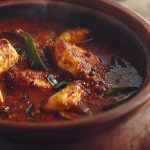
Ayala Curry Recipe
- Total Time: 50 minutes
Description
Want to test your Kerala cooking skills? This traditional ayala curry recipe combines authentic flavors that create a comforting dish filled with coastal essence.
The Kerala-style ayala curry features tender mackerel pieces in a rich, spice-infused gravy. This recipe works well for beginners and experienced cooks alike. The preparation takes about an hour and serves 4-6 people. The curry delivers perfect balance with a subtle tang from kadampuli and warmth from the spices.
Ingredients
- 500g Indian Mackerel (ayala), cut into 2-3 inch pieces.
- 2–3 pieces Kudampuli (lime-sized tamarind), soaked in warm water.
- 2 tomatoes, chopped.
- 10–15 small onions, chopped.
- 3 green chilies, sliced.
- 1 tbsp red chili powder.
- 2 tbsp Kashmiri Chili Powder.
- 1 tsp black pepper powder.
- 1/4 tbsp fenugreek powder.
- 1/2 tbsp turmeric powder.
- 1 tsp mustard seeds.
- 2 sprigs curry leaves.
- 2 tbsp ginger-garlic paste.
- 3 tbsp coconut oil.
- Salt to taste.
- 2–3 glasses water (adjust for consistency).
Instructions
- Heat coconut oil in a kadhai or clay pot (manchatti).
- Add mustard seeds until they splutter, then add curry leaves.
- Sauté shallots, green chilies, and ginger-garlic paste until translucent.
- Add tomatoes and cook until mushy.
- Mix turmeric, fenugreek, red chili, and Kashmiri chili powders with water into a paste.
- Add the spice paste and fry for 2-3 minutes.
- Pour water to reach desired consistency and bring to a boil.
- Add salt and kadampuli, simmer for 5-8 minutes.
- Add ayala pieces and cook on medium heat for 5-8 minutes.
- Optional: Top with pan-fried small onions.
Notes
- Traditional Tip: Clay pot (manchatti) usage boosts the curry’s flavor
- Fish Selection: Fresh mackerel pieces give best results
- Spice Level: Adjust chili powders based on your preference
- Consistency: Gradual water addition helps achieve desired thickness
- Prep Time: 30 minutes
- Cook Time: 20 minutes
- Category: Seafood
- Method: Stovetop Cooking
- Cuisine: Indian
Health Benefits of Ayala Fish Curry
Ayala curry not only tastes amazing but can boost your overall health by a lot. This nutritious dish brings together mackerel’s powerful benefits with curry spices’ therapeutic properties.
Heart Health Champion Your heart benefits when you keep taking ayala curry. Studies show that consuming fatty fish like mackerel at least twice a week can boost heart health and lower your risk of cardiovascular disease. Mackerel’s omega-3 fatty acids help reduce triglycerides without affecting other cholesterol types.
Brain Boost and Mental Wellness Every bite of ayala curry nourishes your brain. Research shows that women who ate mackerel at least once a week showed much better verbal memory. Your brain’s fatty acids consist of 35% omega-3s from mackerel, which supports cognitive function and might protect against age-related decline.
Weight Management Support Want to maintain a healthy weight? A serving of mackerel gives you 20.2 grams of protein – almost half your daily needs. This high protein content makes you feel fuller longer by boosting satiety hormones and reducing hunger signals.
Your ayala curry provides these key nutrients:
- Essential vitamins B2 and D for nerve health and bone strength
- Important minerals including iron, magnesium, and zinc
- Powerful antioxidants from both fish and curry spices
- Anti-inflammatory compounds that reduce body inflammation
Blood Sugar and Pressure Control Mackerel and curry spices work together to maintain healthy blood sugar levels. Studies with over 100,000 people linked moderate curry consumption to better blood sugar control. It also helps maintain healthy blood pressure levels thanks to mackerel’s omega-3s.
References:
– Verywellfit
Keep in mind that preparing Kerala-style ayala curry isn’t just about cooking a meal – you’re creating a nutritional powerhouse that supports your heart and brain health.
Nutrition Information
Let me walk you through the nutritional details of your Kerala-style ayala curry. You’ll know exactly what goes into each tasty serving.
A standard serving (240g) of ayala curry provides 221 calories that makes it perfect as a moderate-calorie main course. Your bowl contains these nutrients:
Macronutrients Per Serving:
| Nutrient | Amount | Daily Value |
|---|---|---|
| Total Fat | 13g | 17% |
| Protein | 12g | 24% |
| Total Carbohydrates | 16g | 6% |
The serving has 3.1g of saturated fat – about 16% of your daily value. You’ll get 3.4g of dietary fiber that covers 12% of your daily needs. The sugar content stays at 6.2g.
Your ayala curry packs these essential nutrients:
- Potassium: 638mg (14% DV)
- Calcium: 60mg (5% DV)
- Iron: 1.5mg (8% DV)
- Sodium: 914mg (40% DV)
The sodium content reaches about 40% of your daily recommended intake. You can balance this by adjusting the salt in your recipe or adding low-sodium sides to your meal.
The protein content makes up 31.4% of total calories, while fats contribute 52.9%, and carbohydrates account for 15.7%. This distribution makes ayala curry a protein-rich dish that fits a balanced diet perfectly.
Storage and Serving Tips for Ayala Curry
The right storage and serving methods can make all the difference in how much you enjoy your ayala curry. Let me help you get the most from this delicious dish!
Timing matters a lot with leftover curry storage. Your ayala curry stays fresh in the refrigerator for 3-4 days with proper storage. Here’s everything you need to know about keeping its flavor intact:
- Let the curry cool to room temperature before refrigeration
- Handle the curry with clean, dry utensils
- Pick an airtight container to lock in freshness
- Make sure the lid stays tightly closed
- Skip freezing since it changes the texture and flavor
Reheating Your Curry Ready to enjoy your leftover ayala curry? The flavors come right back with this method: Pour 2-3 tablespoons of water into a pot with your curry, cover it, and let it simmer for 10-15 minutes. The microwave works too – just use low power for 30 seconds to one minute if you’re rushed.
Serving Suggestions This Kerala-style ayala curry tastes amazing with several traditional sides. Serve it steaming hot with:
- Boiled rice or tapioca (kappa)
- Traditional appam
- Nigellan flatbread that soaks up the curry sauce
The curry’s flavor peaks after it rests covered for 10-20 minutes once cooked. This rest time lets all those authentic Kerala flavors blend perfectly.
Pro Tip: A light salad or cucumber side dish balances the curry’s warmth nicely if you’re having guests over.
Traditional Side Dishes for Ayala Curry
Finding the perfect side dishes can lift your ayala curry from good to extraordinary. Kerala cuisine has many accompaniments that blend with the rich flavors of this beloved fish curry.
Rice and Traditional Breads are the foundations of your ayala curry meal. Steamed white rice stands as a classic choice, but spiced rice pilaf with onions, carrots, and aromatic spices adds adventure to your plate. Traditional flatbreads pair beautifully with curry and help you enjoy every bit of the flavorful sauce.
Your ayala curry needs cooling companions to balance its rich flavors. These traditional sides work great:
- Fresh Indian kachumber salad to add light, crisp contrast
- Cucumber raita or beet and cucumber raita that cools the palate
- Spiced potato dishes like batata bhaji to add substance
The authentic way to enjoy your ayala curry is with kappa (boiled tapioca) – a combination that’s close to every Kerala household’s heart. This pairing creates an irresistible balance of flavors.
Crispy pappadam adds the perfect crunch to complete your Kerala dining experience. Each bite becomes more interesting with these contrasting textures. Your guests will love a spread with light pilaf and fresh salad – a well-laid-out meal that caters to different priorities.
Note that ayala curry shines in its versatility. Simple steamed rice or an elaborate spread of traditional sides – each combination brings its own charm to your table.
Expert Tips for the Best Ayala Fish Curry
Want to elevate your Kerala-style fish curry? These expert tips will help you become skilled at making the perfect ayala curry every time.
A exceptional ayala curry starts with the right fish. Fresh mackerel should have bright, clear eyes and firm flesh. These freshness indicators will make the most important difference in your dish.
Professional Kerala chefs share these game-changing secrets:
A traditional earthen pot (manchatti) adds a distinct taste and keeps the fish moist with minimal gravy. The spice levels need gradual adjustment – start with less and build up, especially with green chilies. The pan should come off the heat right when mustard and fenugreek seeds start crackling to avoid burning. Kashmiri chili powder creates that signature deep orange color better than regular chili powder.
The biggest problem many cooks face is using too much water, which leads to a bland curry. Water should go in gradually while you adjust the consistency. Note that you can thin out thick curry easily, but fixing a watery one becomes quite challenging.
Ginger deserves generosity while garlic shouldn’t be used much of either – this balance improves the curry’s authentic flavors. Coconut oil remains your only choice – it’s not just traditional, it gives ayala curry its authentic Kerala taste.
Temperature control is a vital part of the process. Keep a gentle simmer to prevent the fish from breaking apart. The curry needs 10-20 minutes of covered rest after cooking. This rest allows flavors to develop fully and transforms the curry’s taste remarkably.
Kudampuli (Malabar tamarind) needs careful handling – just enough to adjust the gravy’s tanginess. Some cooks turn to tomatoes as their souring agent instead.
You may like also: Kerala Fish Curry Recipe
Regional Variations of Kerala Ayala Curry
Kerala’s fish curry tells a story of regional diversity. Each area, from the coast to the hills, adds its own special touch to this beloved dish.
Wayanad brings a unique twist to the table. Here, tamarind leaves replace regular tamarind in the curry, which creates a distinctive sourness that locals can’t get enough of. Deep in the hills, the Idukki region serves up a fiery red fish curry that tastes better with age.
The coastal areas showcase different ways to prepare ayala curry:
- Basic Kerala Style: A simple yet flavorful preparation using fried coconut paste
- Fish Peralan: A roasted version popular with Indian breads
- Fish Molee: A coconut milk-based preparation that’s gained international recognition
- Meen Vevichathu: The authentic toddy shop style, traditionally prepared in earthen vessels
Tribal households in Wayanad serve a special tamarind-coconut fish curry that reflects centuries of culinary wisdom. The Malabar region has turned mackerel curry into a breakfast staple, often paired with pathiri or puttu.
The sort of thing I love about these regional variations is how they’ve stayed true to their roots while evolving. To cite an instance, see how fish molee has become so popular that it’s now served in Malaysia and Singapore. This shows Kerala’s culinary influence reaching far beyond its borders.
These regional variations share one common thread – coconut in some form. Coconut milk, coconut oil, or grated coconut are the foundations of Kerala cuisine, regardless of the preparation method.
Read also: Bhekti Macher Paturi Recipe
Note that each region’s unique take on ayala curry reflects more than cooking priorities. Local ingredients and cultural influences shape these distinctive flavors. This rich diversity makes Kerala’s fish curry tradition truly special.
Common Questions About Ayala Curry
Wondering how to make the perfect ayala curry? Here are answers to common questions about this classic Kerala dish.
Can I make the curry paste ahead and freeze it?
You can prepare and freeze the curry paste for later use. The fish should be cooked fresh on serving day. Your frozen paste will work great once defrosted and retain all its authentic flavors.
How long will my fish curry keep?
Your ayala curry will stay fresh in the refrigerator for 3-4 days with proper storage. Just heat it up well before serving.
Can I use different seafood in this recipe?
You definitely can! Mackerel is traditional, but prawns or shrimp make a delicious curry too. The cooking time might change slightly, but the simple recipe stays the same.
What vegetables work well in ayala curry?
You can boost your curry with these vegetables:
– Carrots and potatoes for heartiness
– Turnips or parsnips for unique flavor
– Root vegetables that complement the curry sauce
Does the cooking vessel matter?
Traditional clay pots (manchatti) give the best authentic flavor, but a regular non-stick vessel works fine too. Both methods create delicious results, though earthenware adds that special traditional touch.
Can I prepare this curry in advance?
The curry tastes even better when made a day ahead. Just reheat it gently so the fish pieces don’t break. The flavors develop beautifully overnight.
What if I don’t have curry powder?
You can create your own spice blend with 1 tsp coriander powder, 1/2 tsp cumin powder, 1/4 tsp turmeric powder, and 1 tsp paprika. This mix captures that authentic Kerala curry flavor.
The secret to perfect ayala curry lies in gentle handling of fish and natural flavor development. Take your time – great curries can’t be rushed!
Read also: Chepala Pulusu Recipe
Conclusion
Learning to cook ayala curry brings authentic Kerala flavors straight to your kitchen. This versatile dish shows you can make restaurant-quality Indian food at home without complex techniques or hard-to-find ingredients. Each time you prepare this curry, you’ll create a more nutritious and flavorful meal.
The beauty of ayala curry shines through its adaptability. You can use either the traditional clay pot method or modern cookware, but the key lies in fresh ingredients and balanced spices. Mackerel’s natural richness blends perfectly with aromatic spices to create a dish that satisfies both your hunger and health needs.
The simple recipe serves as your starting point. Regional variations let you find your own preferred style. Your confidence will grow with each preparation, and you’ll soon serve memorable meals that capture South Indian coastal cuisine’s authentic flavors at your table.

